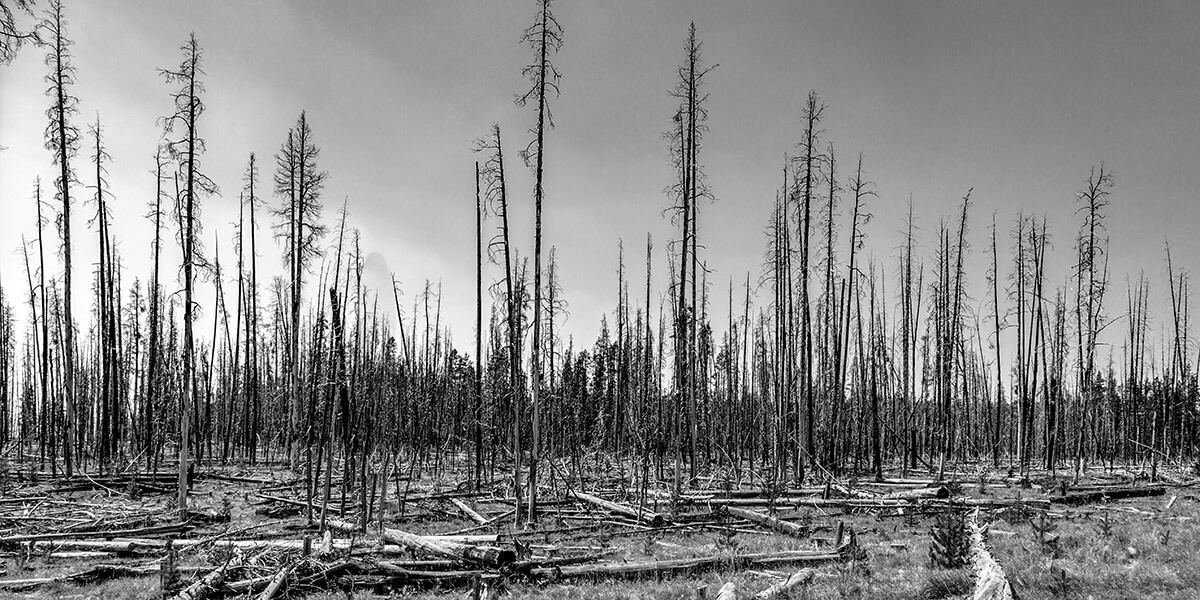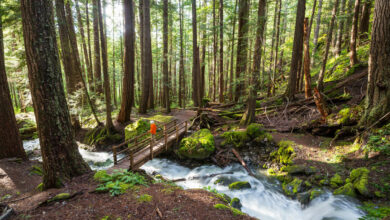“This proposal is a disaster for the Greenbelt” – Tim Gray
If it is true that we cannot stop development and prevent a country from keeping up with its population growth, it is also an unquestionable truth that nature has already clearly shown us the consequences of the lack of respect that human beings have shown for its preservation. Climate change is now evident, and we all have an obligation to contribute so that the environmental situation does not worsen further. This explains, to a great extent, the stance of of nature defenders against the Doug Ford government’s Bill 23, which removes 7400 acres of the Greenbelt, in order to give them to housing construction.
In an interview with Milénio Stadium, Tim Gray, Executive Director of Environmental Defence, argues that the economic interests of homebuilders are too powerful and have had a decisive influence on Ford’s choice, which contradicts what the Premier had always promised – that he would never touch the Greenbelt. Tim Gray even considers this bill a “disaster” and sets a precedent that indicates to us that there is no guarantee of protection at all.
 Milénio Stadium: Why, in your opinion, should Ontario tell Doug Ford “Hands off the Greenbelt”?
Milénio Stadium: Why, in your opinion, should Ontario tell Doug Ford “Hands off the Greenbelt”?
Tim Gray: The Greenbelt was established in 2005 to permanently protect 1.8 million acres of farmland, forests, river valleys and wetlands. Its food security, climate mitigation and adaptation, recreation and economic values are almost incalculable. Over 90 per cent of the Ontario public supports the protection of the Greenbelt, and the Premier and his Ministers have repeatedly promised not to touch it. However, sprawl developers stand to make millions or billions of dollars by building subdivisions of large homes on Greenbelt lands. In addition, because the land has been protected as farmland, sprawl developers are able to buy it cheaply and if they can have the protections removed they will make windfall profits from the increase in the land value. As a result, these developers have successfully convinced the provincial government to propose removing 7400 acres of farms, forests and wetlands from the Greenbelt.
This proposal is a disaster for the Greenbelt and its values, and sets a precedent that the protections are no longer permanent. This will ignite a rush of developers buying up farmland in the Greenbelt and lobbying the provincial government to allow development on their holdings as well.
There was no public, transparent process for discussing if lands removals should occur and therefore no evidence presented that these lands are needed for housing or that the parcels owned by well-connected developers should be the ones selected.
MS: What do you think are the real reasons for this Bill 23?
TG: In simple terms, the provincial government’s rapid dismantling of Ontario’s systems for flood prevention, regional land use planning, infrastructure financing and for the protection of habitat and farmland, is designed to force municipalities to abandon efforts to grow sustainably, and redirect investment and scarce resources to the least efficient, most environmentally harmful forms of development.
While the Ontario government has tried to present this onslaught of upheavals as if it were a response to the very real shortage of low-cost homes, and “family” homes in particular, that narrative is so clearly incompatible with the facts that the government cannot plausibly believe it is true. These changes are likely to deliver fewer homes, not more, especially in the places where they’re most desperately needed.
Our view, based on all the evidence available, is that the government is trying to take advantage of the very real crisis in housing affordability and use it to deliver their actual agenda: creating a pretext for rapid sprawl onto vast tracts of rural farmland owned by well-connected land speculators, and freeing those who own prime pockets of urban land from any obligation to build in a socially and environmentally sustainable way.
MS: Do you think it will still be possible to reverse this law?
TG: Yes, all laws can be reversed. And the Ontario government recently reversed another very controversial law that sought to deny education workers of their constitutionally protected collective bargaining rights
MS: The Government’s argument relies heavily on the need to increase building space to solve the housing shortage problem. What comments do you have for this argument?
TG: There is an area of land larger than the city of Vancouver already approved for development and inside urban boundaries in the GTA. There is no land shortage for building single family homes and no need to open the Greenbelt to development.
MS: What can you say to those who argue that you can’t stop or impede the development of cities? What solution can be proposed as an alternative to this law?
TG: No one is arguing that more people will not move to the cities of the Greater Golden Horseshoe. We need to provide affordable homes for them. The question is what types of homes and where are they best located.
There is a large difference between the types of development that maximize the supply of homes people need, fight car-dependency, reduce greenhouse gas emissions, and conserve farmland and natural places, and those types of development which maximize profit for the best-connected landowners.
While Ontarians desperate for homes they can afford will benefit from rules that direct housing to existing neighbourhoods and built up areas, and mandate efficient use of land and floor space, land speculators who have recently stockpiled vast swathes of the Greater Golden Horseshoe’s best remaining farmland wetlands and wild places want just the opposite. To maximize their windfall, they need policies which will ensure that, eventually, almost all of the land they own will get developed. That means developing new areas at low densities that eat up more farmland and habitat for the same number of homes and workplaces. It also means eliminating rules that keep the most precious areas, such as endangered species habitat, wetlands, river corridors, floodplains, forests, and other wildlife habitat, off limits for their bulldozers. Likewise, when it comes to what gets built in existing neighbourhoods, meeting housing need and enhancing affordability would require policies aimed at quickly adding large numbers of low-cost homes that are practical for all household types to existing neighbourhoods, including large numbers of purpose-built walk-up apartments, townhomes and stacked townhouses, on what are now “single detached” lots in low-rise neighbourhoods. It would require a strengthening of protections against displacement for existing tenants, and inclusionary zoning provisions designed to maximize the number of deeply affordable homes included in the developments closest to public transit and amenities. By contrast, the most deep-pocketed and politically influential urban land speculators benefit from policies which concentrate new homes on the small swaths of “prime” urban land that they already own, and which free them from design standards and up-front payments required to protect the environment and improve affordability for residents long-term.
In each and every case where the interests of the best-connected real estate investors come into conflict with those of Ontarians who simply need access to a dignified home, with the environment, and with the public interest more broadly, Ontario is siding with very wealthy and well-connected investors.









Redes Sociais - Comentários